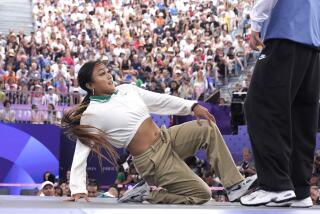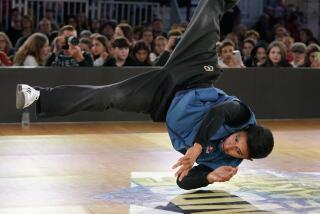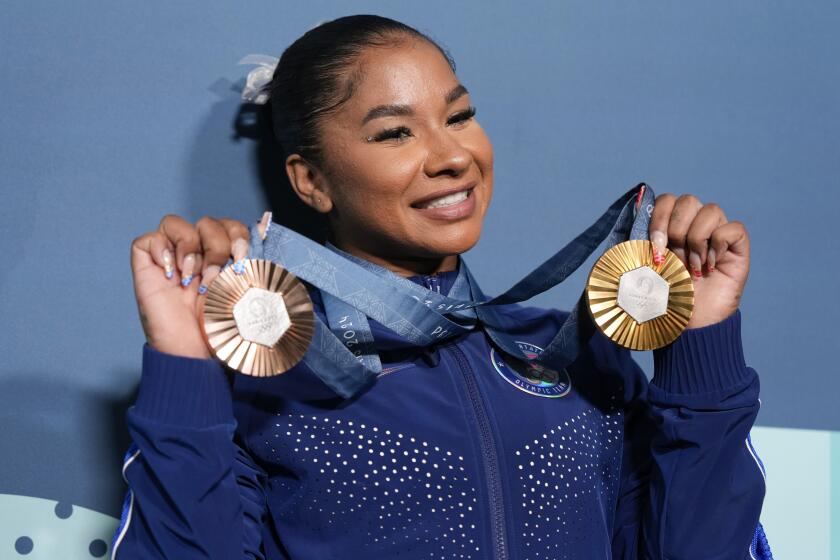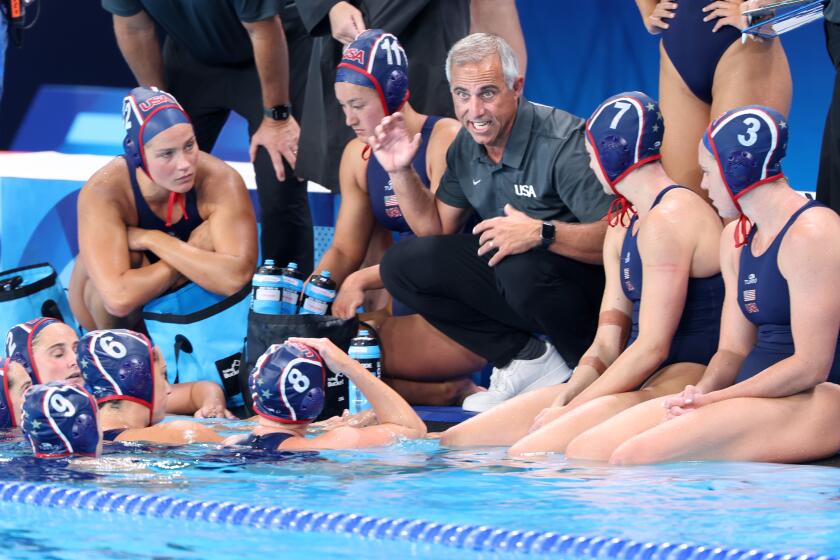An alternate reality at the Olympics
SOCHI, Russia — Wearing a dark warmup suit with “USA” emblazoned on the back, Katie Eberling helps carry the 400-pound bobsled to the starting line and places it down on freshly sanded blades.
She gives a reassuring nod to teammate Elana Meyers, her off-season roommate and the pilot with whom she has won two world championship medals. She smiles at Meyers’ new brakeman, Lauryn Williams, a former track star who has been racing for only seven months.
Eberling watches the pair as they start down the ice, following their progress as the sled slides into the first curve. Her gaze cannot and does not linger long. There are two more American sleds that need to be moved to the track — her responsibility.
As an Olympic alternate, Eberling doesn’t have time to dwell on her lost dreams. She’s too busy helping other people realize theirs.
“I’d be lying if I said it wasn’t extremely hard and that I wasn’t still trying to heal from it,” she said, forcing a small smile. “But you can’t focus on that, not when other people are depending upon you.”
Eberling, 25, agreed to help here a few days after the U.S. Bobsled & Skeleton Federation’s surprising decision to leave her off the Sochi roster. Her parents urged her to stay home, but she believed she had a responsibility to her teammates.
Her new role tests her character and emotions on a near hourly basis. Eberling lives in an alternate’s limbo: She is not considered an Olympian but is no mere spectator.
She is not staying in the athletes’ village. She was not allowed to walk in the opening ceremony. Beyond her team uniform, she didn’t get any free clothing, not even one of those much-debated Ralph Lauren sweaters.
And unlike most Olympic alternates, Eberling doesn’t sit around waiting for a teammate to roll an ankle or come down with flu. She works. She spends hours at the track and in the workroom, helping to carry the squad’s three massive sleds, sanding the bobs’ blades to make them faster and taking training runs to give the three U.S. brakemen rest and scouting reports.
“I was never under the illusion that it would be an easy role,” she said. “But ultimately I am part of something bigger than myself, and I think that has helped me move forward.”
Eberling seems to have found a fledgling peace in the Caucasus Mountains, where she has embraced as much of the Olympic experience as her schedule allows. In the Games’ first week, she visited Olympic Park, watching pairs figure skating and witnessing the thrilling U.S. hockey victory over Russia.
There have been rough moments too.
She cried watching the opening ceremony, when the high-definition difference between her role and the Olympians’ experience was broadcast directly at her.
She has shared a residence in the mountain village of Krasnaya Polyana with bobsled alternates and the family of skeleton racer Noelle Pikus-Pace, a silver medalist here. It’s a beautiful home, Eberling says, and one made especially lively by Pikus-Pace’s two small children.
“It has been a lot of fun to have the kids around,” she said. “And Noelle is just such a positive person. It has been so good for me.”
Eberling had been considered a lock for the U.S. team after finishing second with Meyers at the world championships last year. She medaled three times in four races on the World Cup circuit this season and finished second at the national push championships that clock how fast athletes can thrust the sleds off the starting line.
But the federation passed over Eberling last month in favor of track stars Lolo Jones and Williams, who is an Olympic silver medal 100-meter sprinter. The two brakemen are poised to become only the ninth and 10th U.S. athletes to compete in both the Winter and Summer Games.
On the World Cup circuit this season, Jones won two silvers to Eberling’s three bronzes, but for one of her medals she raced with Meyers, the world’s No. 2-ranked pilot. Eberling did not race this season with Meyers, with whom she made the world championship podium in 2012 and 2013.
There was no evidence of any lingering animosity between Jones and Eberling as they worked on the track star’s sled last week. “We’re all a team right now,” Jones said. “She’s out here helping us.”
Eberling isn’t sure whether her future will include bobsledding. She earned a teaching degree before joining the national team and she wonders whether it’s time to “get a grown-up job.”
She knows some people in the U.S. bobsled federation would like to see her stick with the sport, perhaps becoming a driver and giving the Olympics another shot in 2018. With the wounds still healing, Eberling isn’t ready to consider another four years in the hardscrabble world of international bobsledding.
“You give it all you have and you make yourself vulnerable by doing that,” she said. “There’s no other way to do it. You have to go all in if you want to wear USA and represent your country. I don’t have any regrets … but right now I can’t think about doing it all over again.”
Twitter @stacystclair
More to Read
Go beyond the scoreboard
Get the latest on L.A.'s teams in the daily Sports Report newsletter.
You may occasionally receive promotional content from the Los Angeles Times.








